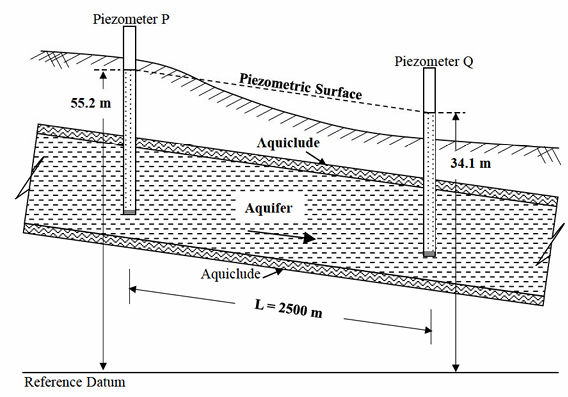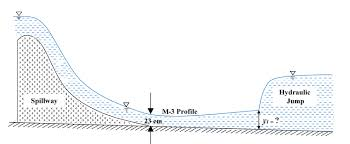Civil Engineering Gate Yearwise
Civil Gate 2025 Set-2
Civil Gate 2024 Set-1
Civil Gate 2024 Set-2
Civil Gate 2023 Set-1
Civil Gate 2023 Set-2
Civil Gate 2022 Set-1
Civil Gate 2022 Set-2
Civil Gate 2021 Set-1
Civil Gate 2021 Set-2
Civil Gate 2020 Set-1
Civil Gate 2020 Set-2
Civil Gate 2019 Set-1
Civil Gate 2019 Set-2
Civil Gate 2018 Set-1
Civil Gate 2018 Set-2
Civil Gate 2017 Set-1
Civil Gate 2017 Set-2
Civil Gate 2016 Set-1
Civil Gate 2016 Set-2
Civil Gate 2015 Set-1
Civil Gate 2015 Set-2
Civil Gate 2014 Set-1
Civil Gate 2014 Set-2
Civil Gate 2013
Civil Engineering GATE 2019 Set-2 Questions with Answer
Ques 53 Civil
A series of perpendicular offsets taken from a curved boundary wall to a straight survey line at an interval of 6 m are 1.22, 1.67, 2.04, 2.34, 2.14, 1.87, and 1.15 m. The area (in m2, round off to 2 decimal places) bounded by the survey line, curved boundary wall, the first and the last offsets, determined using Simpson's rule, is _______.
67.00 to 70.00 is the correct answer.
Ques 54 Civil
The uniform arrival and uniform service rates observed on an approach road to a signalized intersection are 20 and 50 vehicles/minute, respectively. For this signal, the red time is 30 s, the effective green time is 30 s, and the cycle length is 60 s. Assuming that initially there are no vehicles in the queue, the average delay per vehicle using the approach road during a cycle length (in s, round off to 2 decimal places) is _______.
12.00 to 13.00 is the correct answer.
Ques 55 Civil
A broad gauge railway line passes through a horizontal curved section (radius = 875 m) of length 200 m. The allowable speed on this portion is 100 km/h. For calculating the cant, consider the gauge as centre-to-centre distance between the rail heads, equal to 1750 mm. The maximum permissible cant (in mm, round off to 1 decimal place) with respect to the centre-to-centre distance between the rail heads is _______.
157.2 to 157.6 is the correct answer.
Ques 56 Civil
The speed-density relationship of a highway is given as
u = 100 - 0.5k
where, u = speed in km per hour, k = density in vehicles per km. The maximum flow (in vehicles per hour, round off to the nearest integer) is _______.
5000 to 5000 is the correct answer.
Ques 57 Civil
A confined aquifer of 15 m constant thickness is sandwiched between two aquicludes as shown in the figure (not drawn to scale).

924.0 to 926.0 is the correct answer.
Ques 58 Civil
At the foot of a spillway, water flows at a depth of 23 cm with a velocity of 8.1 m/s, as shown in the figure.

Just before the hydraulic jump, the depth of flow y1 (in m, round off to 2 decimal places) is _______.
0.41 to 0.43 is the correct answer.
Ques 59 Civil
Two identical pipes (i.e., having the same length, same diameter, and same roughness) are used to withdraw water from a reservoir. In the first case, they are attached in series and discharge freely into the atmosphere. In the second case, they are attached in parallel and also discharge freely into the atmosphere. Neglecting all minor losses, and assuming that the friction factor is same in both the cases, the ratio of the discharge in the parallel arrangement to that in the series arrangement (round off to 2 decimal places) is _______.
2.80 to 2.90 is the correct answer.
Ques 60 Civil
The ordinates, u, of a 2-hour unit hydrograph (i.e., for 1 cm of effective rain), for a catchment are shown in the table.

96.5 to 97.5 is the correct answer.
Ques 61 Civil
The dimensions of a soil sampler are given in the table.

11.10 to 11.12 is the correct answer.
Ques 62 Civil
A 2 m × 4 m rectangular footing has to carry a uniformly distributed load of 120 kPa. As per the 2:1 dispersion method of stress distribution, the increment in vertical stress (in kPa) at a depth of 2 m below the footing is _______.
40 to 40 is the correct answer.
Ques 63 Civil
Constant head permeability tests were performed on two soil specimens, S1 and S2. The ratio of height of the two specimens (LS1:LS2) is 1.5, the ratio of the diameter of specimens (DS1:DS2) is 0.5, and the ratio of the constant head (hS1:hS2) applied on the specimens is 2.0. If the discharge from both the specimens is equal, the ratio of the permeability of the soil specimens (kS1:kS2) is _______.
2.95 to 3.05 is the correct answer.
Ques 64 Civil
A timber pile of length 8 m and diameter 0.2 m is driven with a 20 kN drop hammer, falling freely from a height of 1.5 m. The total penetration of the pile in the last 5 blows is 40 mm. Use the Engineering News Record expression. Assume a factor of safety of 6 and empirical factor (allowing reduction in the theoretical set, due to energy losses) of 2.5 cm. The safe load carrying capacity of the pile (in kN, round off to 2 decimal places) is _______.
151.00 to 152.00 is the correct answer.
Ques 65 Civil
A square footing of 2 m sides rests on the surface of a homogeneous soil bed having the properties: cohesion c = 24 kPa, angle of internal friction φ = 25° and unit weight γ = 18 kN/m3. Terzaghi's bearing capacity factors for φ = 25° are Nc = 25.1, Nq = 12.7, Nγ = 9.7, N'c = 14.8, N'q = 5.6 and N'γ = 3.2. The ultimate bearing capacity of the foundation (in kPa, round off to 2 decimal places) is _______.
920.00 to 925.00 or 350.00 to 356.00 is the correct answer.

Total Unique Visitors